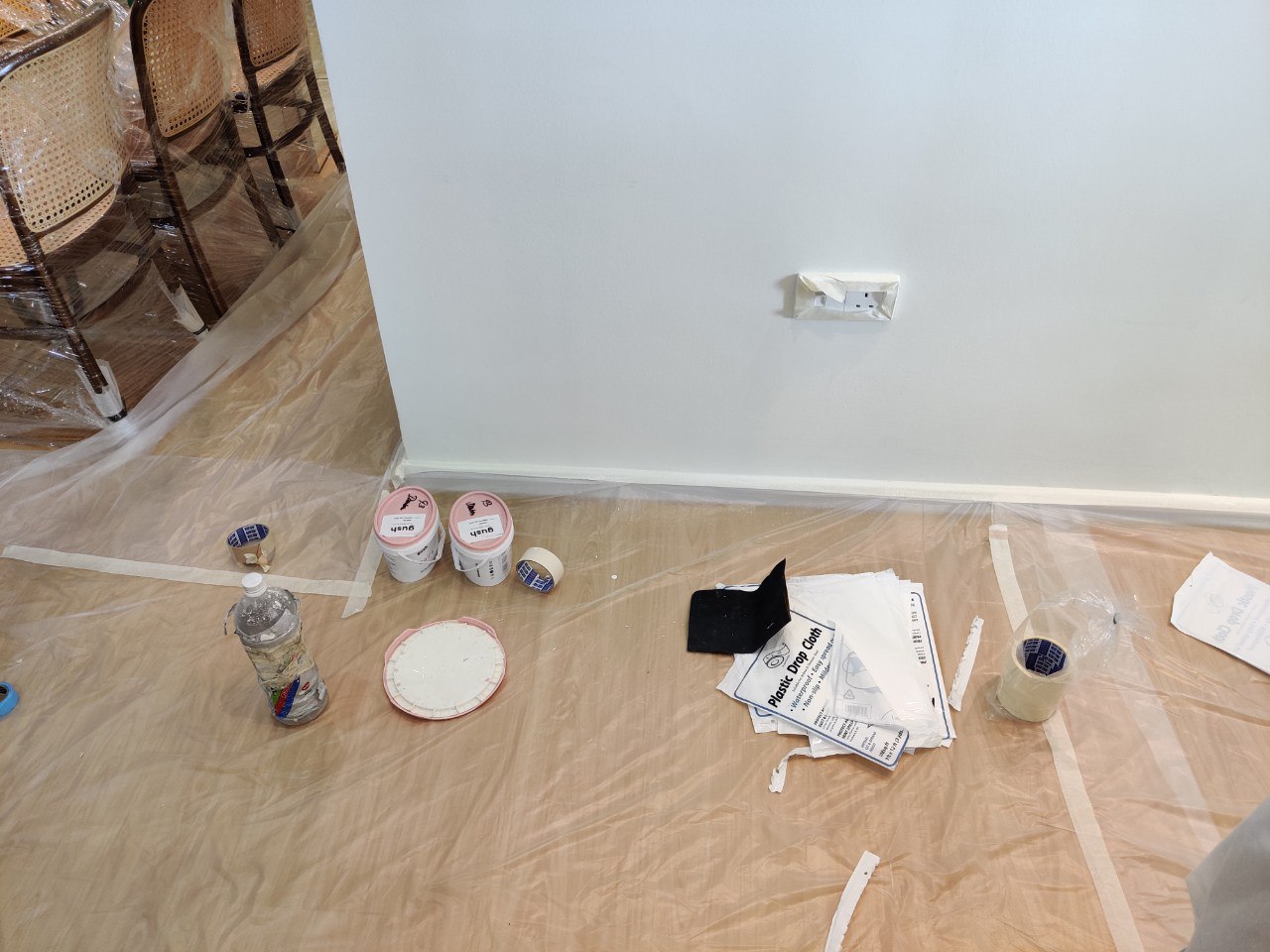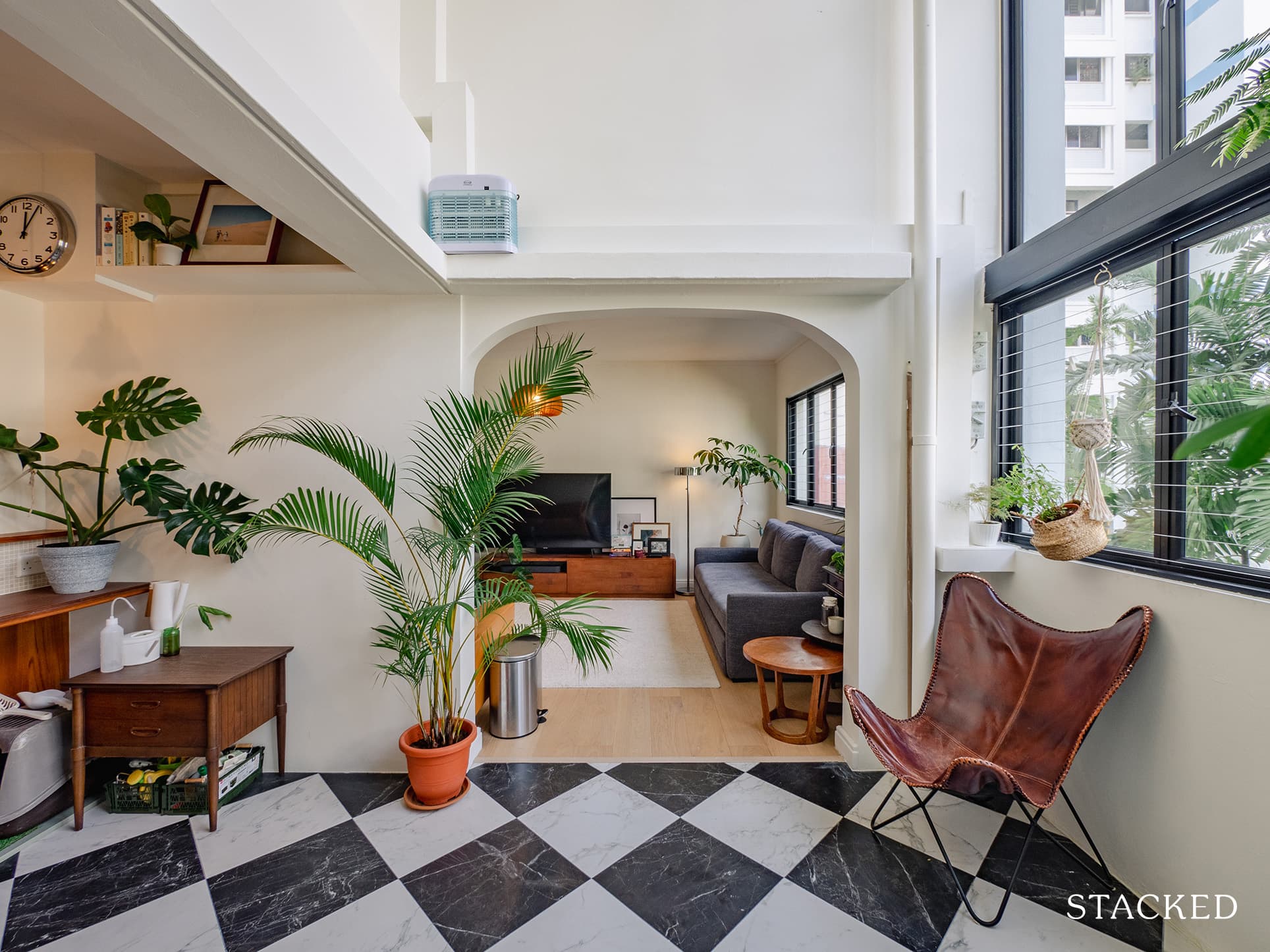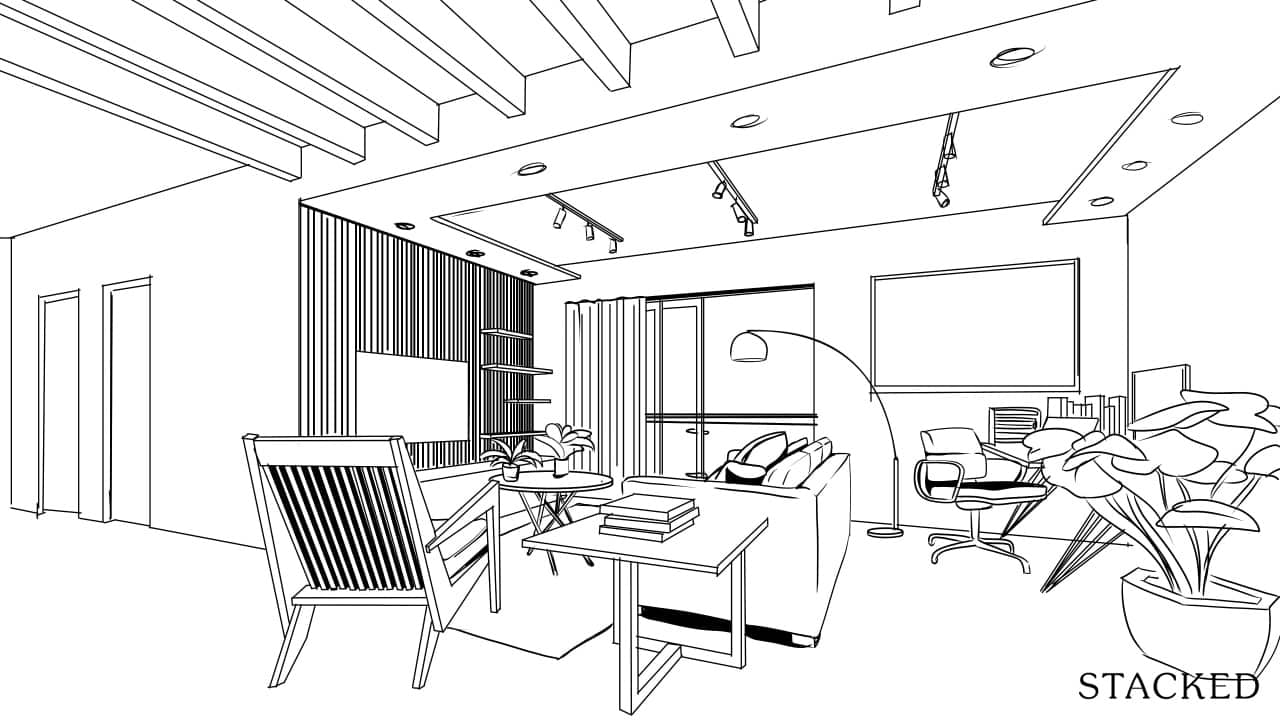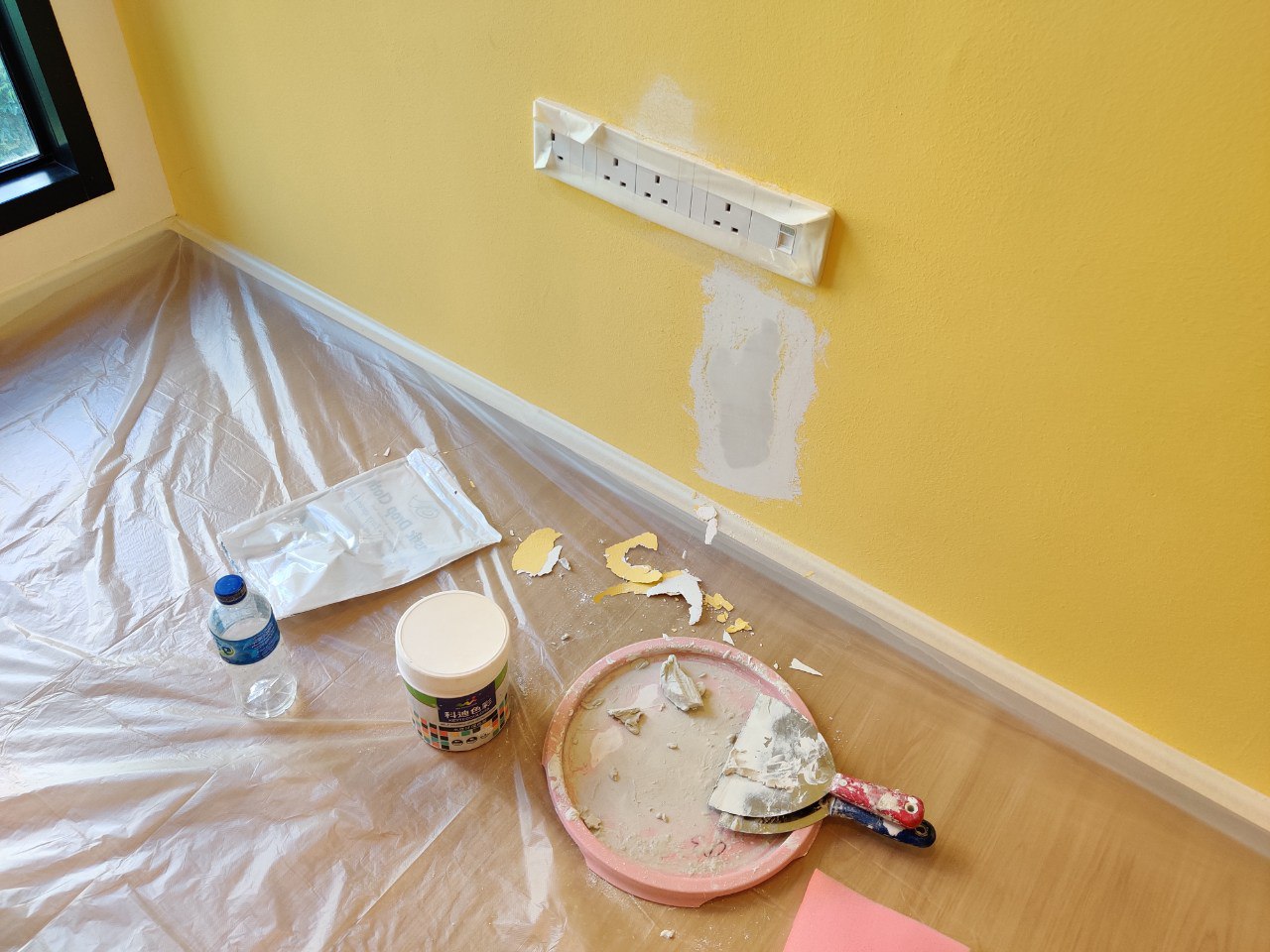The Secret To A Successful Renovation Process: 6 Ways To Better Manage Expectations With Your ID

Get The Property Insights Serious Buyers Read First: Join 50,000+ readers who rely on our weekly breakdowns of Singapore’s property market.
A seasoned content strategist with over 17 years in the real estate and financial journalism sectors, Ryan has built a reputation for transforming complex industry jargon into accessible knowledge. With a track record of writing and editing for leading financial platforms and publications, Ryan's expertise has been recognised across various media outlets. His role as a former content editor for 99.co and a co-host for CNA 938's Open House programme underscores his commitment to providing valuable insights into the property market.
Every few months, there seems to be at least one negative story about Interior Designers (IDs) or contractors. It’s unfortunate that the relationship between IDs, contractors, and homeowners tends to be quite adversarial – sometimes it seems like homeowners have to act like guards, waiting to “catch” the ID doing something wrong. But an email from a reader got us thinking: perhaps the relationship needs to be more of a two-way street:
Should there be more give-and-take in the relationship with IDs?
We recently had an email from S, a reader who had issues with her own ID. She and her husband actually engaged their previous ID, even though he wasn’t the cheapest.
Still, they did encounter issues that were quite puzzling. “There were some instances where we were left scratching our heads and wondering what happened,” S recounted. They were renting a place while waiting for the renovation to be completed, and before the reno started, they were promised that the place would be finished by February.
In December, they were informed that February was no longer possible, and now it would most probably be the end of March. As a result, they had to pay for an additional month of rental.
There were additional hiccups too. Their previous place had full-length wardrobes (2.8m high), and they assumed that their new place would be based on full-length wardrobes too. As a result, they had to go through “another back and forth with our ID because the 3d renderings did show full-length wardrobes.”
Despite these issues, however, S seemed to be quite tolerant.
She noted that “IDs and sub-cons need to make money too. Squeezing them out of business doesn’t do anyone any good.”
There was a case where “he gave us a quote for vinyl flooring which turned out to be >1k more than the quote we got from another vendor outside”. But she was understandable about the situation for IDs too and they ended up sticking with their ID as she fairly pointed out, “his margins elsewhere are probably squeezed (he said so too eventually) and he needs to make money somewhere”.
Ultimately, S wanted to highlight that “there is a lot of give and take in every good working relationship”. And so while there were not-so-good parts, there were many positive aspects that they had to account for as well. For instance, “he didn’t charge us extra when we said we wanted drawers in a portion of our wet/dry kitchen when the quote was based on cabinets”. And “he absorbed the extra cost to fabricate full-length cabinets” too.
She did acknowledge that he was probably getting better profit margins from them as compared to other clients who may have gone through every single line item to compare – but being understanding in that regard helped when it came to points that they overlooked too.
As S pointed out, one good way to prevent further comparisons would be to “stop listening to your friends/uncles/aunties/friends pet dog/cat who swear that they got a better deal than you when they/their distant cousin 10x removed just did their renovation.”
As such, most of the real estate industry tends to be on the side of the homeowner (and rightly so, at times); and even some developers are notoriously harsh on contractors. But is there a way to deal fairly with IDs and contractors, for the benefit of both parties? Here are a few things we could consider:
1. We should stop dismissing the aesthetic elements as trivial
Some homeowners think aesthetic elements, like design themes, colours, and styles, are not really worth paying for. It’s a little bizarre how Singaporeans will, on the one hand, admire great design and say “wow, I don’t have this kind of talent”, but at the same time decide it’s not worth paying someone for it.
The aesthetic element is about much more than just “tying a room together”. Some designers have spent significant amounts of time, and money, in school to understand the origins of certain styles, and the subtle elements that make them work.

Shabby chic, for instance, came from makeshift efforts to uplift the home in the destruction of the Second World War, hence the use of furniture from a specific era; and Art Deco styles require a certain repetition of patterns to work. Whole volumes can, and have, been written about these.
It is, of course, the customer’s prerogative to ignore all this, and go for a pure contractor (i.e., someone who just executes what you want); that is a way to save money. But it isn’t fair to dismiss this element of an ID’s work as being somehow worthless.
Also, if you do pay for an ID, at least hear them out on the fundamentals of a given style.
2. If your IDs insist on using certain suppliers or sub-contractors, it’s not always about profit
A common habit of Singaporean homeowners is to dig up a cheaper electrician, source of tiles, etc., and demand their ID use them. These are the scenarios where the homeowner says “My aunt used this carpenter and he charges much less, and she says he’s good.”
When the ID objects, some homeowners jump to the conclusion that it’s due to kickbacks, conspiracies, etc.
But take the ID’s perspective for a moment: what happens if they’re forced to use a cheaper carpenter, and his cabinets sag? Or what if they’re forced to use cheaper tiles, and they break?

Quite often, the homeowner will still blame the ID. This is why they might push back: the designer can be held liable for certain failures, even when the sub-contractor or materials are the ones their customer insisted upon.
Another factor here is urgency. If you’re demanding that the ID complete things on a tight time schedule, it’s unfair to then foist an unfamiliar sub-contractor or supplier on them.
They’ve chosen their suppliers or sub-contractors with your time limit in mind, and they’re working with people whom they think have the best chance of delivering. If you change these people, and it causes a delay, it’s not really fair to blame the ID.
3. Communication is inherently challenging when it comes to Interior Design
Describing interior architecture is like trying to write instructions on how to tie a shoelace – it’s an exercise in frustration, and the odds of being misunderstood on at least one point is going to be close to 100 per cent.
Singaporean homeowners do need to be a little more understanding, when their ID misinterprets something. There’s a high chance this will happen even if there are loads of e-mails, text messages, and even sketches.

Scale is the biggest issue here: unless you’re in the industry yourself, it can be hard to visualise the size and space even with 3D art – that’s why some owners end up complaining that their rooms seem smaller than expected, after a partition.
There’s also the simple issue of language. Not all IDs, just like not all homeowners, communicate well; or in some cases, both parties are proficient in different languages. These situations call for more patience – and both sides should brace themselves for potential miscommunications.
This isn’t to say we shouldn’t take every precaution, to verify each step before it’s put in place – just that, when things do go wrong, we should consider that the miscommunication may be no one’s fault.
4. We need more patience when requesting 3D renderings, sketches, and other graphic aids
Some homeowners have the mistaken idea that these sketches and renderings are just churned out in minutes, by computers. They’re not. Some of these things can take hours to do, and whole teams are sometimes involved.
But when an ID firm takes “too long” to get back to a customer with these, they’ll say the designer is slow or uninterested. We’ve also heard of homeowners who demand a ridiculous number of these, with one revision on top of another; and are then furious when the designer says it’s too much to comply with.
5. Designers don’t have absolute control over delivery times
Singaporean homeowners blame the ID for every delay, and this is probably the height of unfairness. The simple fact is, that no designer – however professional or skilled – is in full control of the time frame.
This is because a lot of people are involved in a renovation project. The suppliers may find their shipment delayed. The movers may accidentally break things. The carpenter may be down with Covid. The electrician may have a family emergency and have to go back to Malaysia for a week.

There are a virtually unlimited number of things that can go wrong, when you factor in the sheer number of people involved.
While designers should still have milestones, and be held to certain time frames, it’s not always fair to pin the entire blame on them. It might be better if we ask what they’re doing to deal with a delay, and gauge their adequacy from that.
6. While word-of-mouth is helpful, our relatives and friends are probably not experts
Some homeowners will insist the designer change key elements, or pick sub-contractors and vendors, based on recommendations from their relative/friend. This often ignores the fact that the designer is a qualified expert, and may know better than your relatives or friends.

Do bear in mind that every single home is different. What worked for your aunt’s place may be a bad idea for yours, and it’s possible the “super cheap” tiles your friend found are imitations (but they don’t know it yet).
This isn’t to say you should discount the advice of people you know; just that you shouldn’t immediately prioritise it over the advice of your ID.
This attitude is also a way to do yourself an injustice. If you’re paying for a designer’s services, why fight so hard to contradict them? That’s like hiring a cleaner, and then insisting on doing the cleaning yourself.
If a friend or relative can suggest something better, do bring it up to your designer for discussion; but don’t immediately text them and insist they do as you’re advised.
What do you think are some ways homeowners and IDs can find more common ground? Do let us know your ideas. In the meantime, you can find more strategies and tips for homeowners on Stacked. We’ll also provide you with in-depth reviews of new and resale developments alike.
If you’d like to get in touch for a more in-depth consultation, you can do so here.
Have a real estate question, or not sure what your options are? Email us at stories@stackedhomes.com.
Ryan J. Ong
A seasoned content strategist with over 17 years in the real estate and financial journalism sectors, Ryan has built a reputation for transforming complex industry jargon into accessible knowledge. With a track record of writing and editing for leading financial platforms and publications, Ryan's expertise has been recognised across various media outlets. His role as a former content editor for 99.co and a co-host for CNA 938's Open House programme underscores his commitment to providing valuable insights into the property market.Read next from Property Advice

Property Advice Should We Buy An Old 99-Year Leasehold Condo To Live In: Will It’s Value Fall When The Lease Runs Out?

Property Advice We Own A $800K 1-Bedder And A $1.1M 3-Bedder: Is It Possible To Upgrade To A 4-Bedder Condo?

Property Advice I Own A 55-Year-Old HDB Flat, But May Have To Sell — Can I Realistically Buy A Freehold Condo With $700K?

Property Advice We Own A 2-Bedder Condo In Clementi: Should We Decouple To Buy A Resale 3 Bedder Or Sell?
Latest Posts

Homeowner Stories What I Only Learned After My First Year Of Homeownership In Singapore

Singapore Property News Why More Land Doesn’t Automatically Fix Housing In Singapore

On The Market Here Are The Cheapest 4-Room HDB Flats in Central Singapore You Can Still Buy From $490K

Pro How A Once “Ulu” Condo Launched In 1997 Became A Top Performer

Editor's Pick I Reviewed A New Launch 4-Bedroom Penthouse At Beauty World

Property Market Commentary When Renting In Singapore Is The Smarter Move — And Buying Can Wait

Editor's Pick Why Singaporean Families Are Looking At This Landed Enclave From Around $4M

Singapore Property News Lentor’s First Condo Is Complete — The Early Profits May Surprise You

Editor's Pick A Wave Of New HDB Resale Supply Is Coming In 2026: Here’s Where To Find Them

On The Market These Are Some Of The Cheapest 5-Room HDB Flats Left In Central Singapore

Pro This 698-Unit Ang Mo Kio Condo Launched At The Wrong Time — And Still Outperformed Peers

Singapore Property News $281.2M in Singapore Shophouse Deals in 2H2025 — But That Number Doesn’t Tell the Full Story

Property Market Commentary 5 Key Features Buyers Should Expect in 2026 New Launch Condos

Editor's Pick What “Lucky” Singaporean Homebuyers Used To Get Away With — That You Can’t Today

Property Investment Insights These Resale Condos In Singapore Were The Top Performers In 2025 — And Not All Were Obvious Winners


